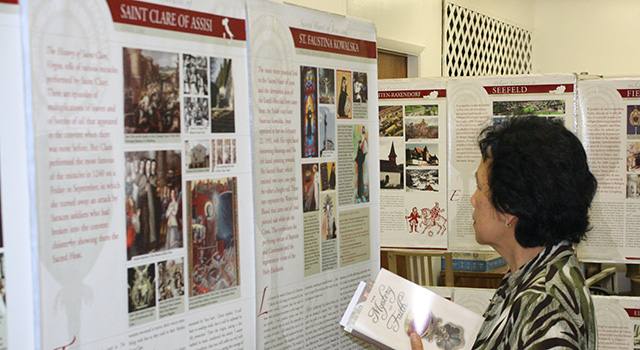By Lizette M. Lantigua - Florida Catholic
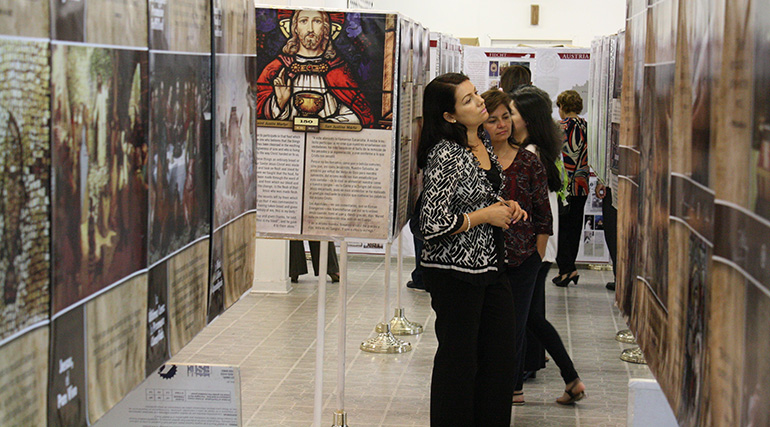
Photographer: COURTESY PHOTO | Fernando Azouth
The "Miracles of the Eucharist" exhibit consists of approximately 140 laminated panels with information, photos and other visuals of the many approved miracles of the Eucharist around the world.
PEMBROKE PINES | If anyone had any doubts about the real presence of Christ in the Eucharist, they probably left the exhibit, “Eucharistic Miracles of the World,” repeating the phrase “My Lord and my God,” just like St. Thomas the Apostle.
“It’s amazing all the stories of the miracles. I knew about some of them but not that there were so many,” said Beatriz Capdevielle of St. Katherine Drexel Church in Weston, one of over 300 people who visited the exposition at St. Boniface Church in mid-April.
The exhibit, created by an Illinois-based organization called The Real Presence, is brought to parishes that request it by the Florida Center for Peace, a group affiliated with the International Association of Mary Queen of Peace.
At St. Boniface, the exhibit was presented by the ministry Una Gota de Vida (One Drop of Life), whose mission is to create awareness of the presence of Christ in the Eucharist and provide formation for Catholics, according to Fernando Azouth, a member of the ministry.
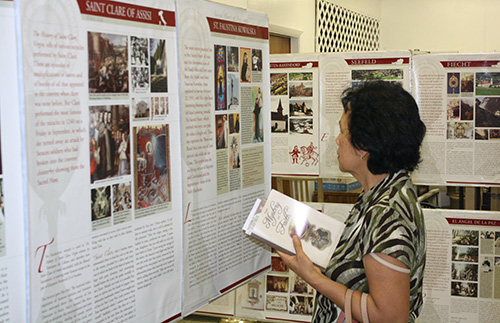
Photographer: COURTESY PHOTO | Fernando Azouth
A visitor looks over the "Miracles of the Eucharist" exhibit which was on display at St. Boniface in Pembroke Pines for over a week in mid-April.
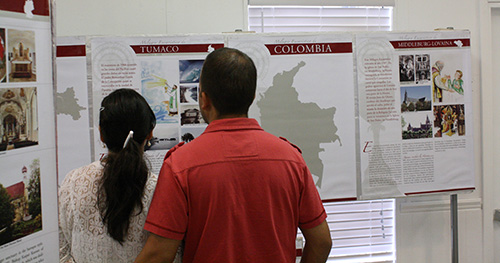
Photographer: COURTESY PHOTO | Fernando Azouth
Parishioners and visitors to St. Boniface look over the "Miracles of the Eucharist" exhibit.
The exhibit consists of approximately 140 laminated panels with information, photos and other visuals of the many approved miracles of the Eucharist around the world.
The information includes examples of people who were healed, quotes from saints and mystics regarding the Eucharist, and passages from the Bible regarding the presence of Christ in the Eucharist. Additionally, in an adjacent seating area, people can watch a video of a Mass with a narrator explaining the various parts.
“This is really nice, with lots of interesting facts,” said Lucy Ovalles of Mother of Our Redeemer Church in Miami.
Nubia Sanchez from St. Edward Church in Pembroke Pines said she was familiar with some of the miracles but had never heard about the one that occurred in the island of Tumaco, Colombia on Jan. 31, 1906.
Right after a violent earthquake, the people of the town ran into the church and asked the pastor, Father Gerard Larrondo, to lead a procession with the Blessed Sacrament. They set out toward the beach weeping and crying to God, since a tsunami had also caused much destruction in the surrounding areas.
Just as a wave came rushing in, the priest raised the monstrance with the Holy Eucharist and traced the sign of the cross in the air. At that moment the wave halted and began to recede. As the sea quickly resumed its normal level, the people shouted “Miracle! Miracle!”
Panel after panel of the exhibit displayed amazing stories from countries all over the world: Austria, Belgium, Croatia, Egypt, several in France, Peru, Spain and the list goes on, from as early as the first centuries of Christianity to most recently in 2001 in India.
This most recent miracle took place in Trivandrum, in the church of St. Mary of Chirattakonam, as parishioners began a novena to St. Jude. The pastor, Father Johnson Karoor, noticed three red dots that suddenly appeared on the host in the monstrance. Several days later when he opened the tabernacle, there were more than three red dots. A human face appeared on the host and this image became clearer and clearer.
Photos of the host were displayed at the exhibit and the face of the man in the host resembles that traditionally associated with Jesus.
“This should be displayed to the youth because they take this for granted like a routine and do not give the importance to the real presence of Christ in the Eucharist,” said Sanchez as she observed the photos.
Not all the miracles occurred in a church. Some happened in other places, such as a field in the valley of Mühldorf in the year 1411. A thief stole a consecrated Eucharist from the sacristy of a church and hid it in his glove. He then took off in a horse and galloped through side roads until he got to a spot where the horse halted and would not move.
Laborers in the area came to help but the horse was as stiff as a statue. Without warning the horse galloped, and the hidden host fell from the man’s glove without anyone noticing. A few days later, a Mrs. Scheck from the town of Mannersdorf discovered the host near a hedge, encircled by a bright light. She noticed that it was the Eucharist and observed that it was broken into two parts joined together by threads of bleeding flesh.
Scheck was greatly moved and with her own money built a small chapel in that spot. After the news spread it became necessary to build a larger church.
One of the most investigated miracles is from the town of Lanciano, Italy. It occurred in the year 750 at the Church of St. Francis where a monastic priest doubted the real presence of the body and blood of Jesus in the Eucharist. During the Mass, at the point of the consecration, he saw the host turn into flesh and the wine into blood, and it was shown to all those in the church.
In 1970, the archbishop of Luciano and the provincial superior of the Conventual Franciscans in Abruzzo, with Rome’s approval, asked Dr. Edward Linoli, director of the hospital in Arezzo, to conduct a thorough scientific investigation to make sure this was not a hoax.
Dr. Linoli presented a detailed report concluding that it was authentic flesh, that the blood was type AB, and that it was the same blood type as that of the man of the shroud of Turin and of a Middle Eastern population — with no trace of salt infiltrations or preservative substances.
In 1973, the advisory board of the World Health Organization appointed a scientific commission. Their investigation lasted 15 months and included 500 tests. They also concluded that the flesh and blood are in a state of fresh living tissue, as if they had been taken that same day.
FIND OUT MORE
Any parish interested in hosting the “Miracles of the Eucharist” exhibit should call the Florida Center for Peace, 305-412-1700 or email [email protected].
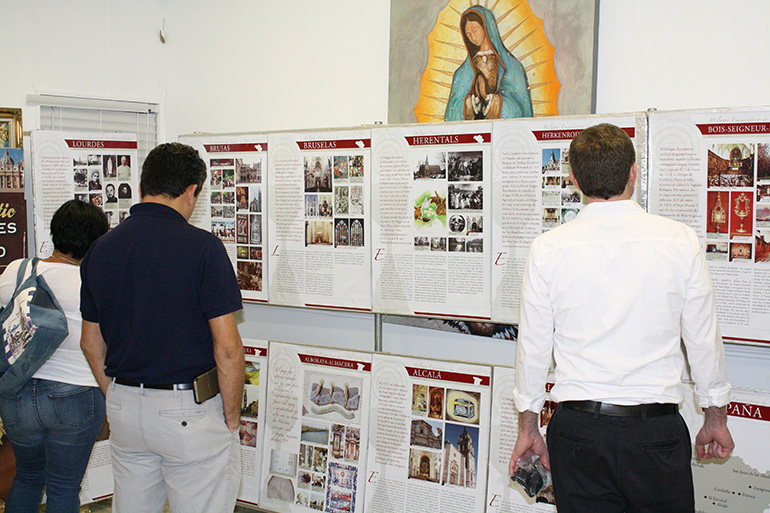
Photographer: COURTESY PHOTO | Fernando Azouth
Parishioners and visitors to St. Boniface look over the "Miracles of the Eucharist" exhibit outlining dozens of miracles related to the Eucharist over the centuries, in every corner of the globe.
